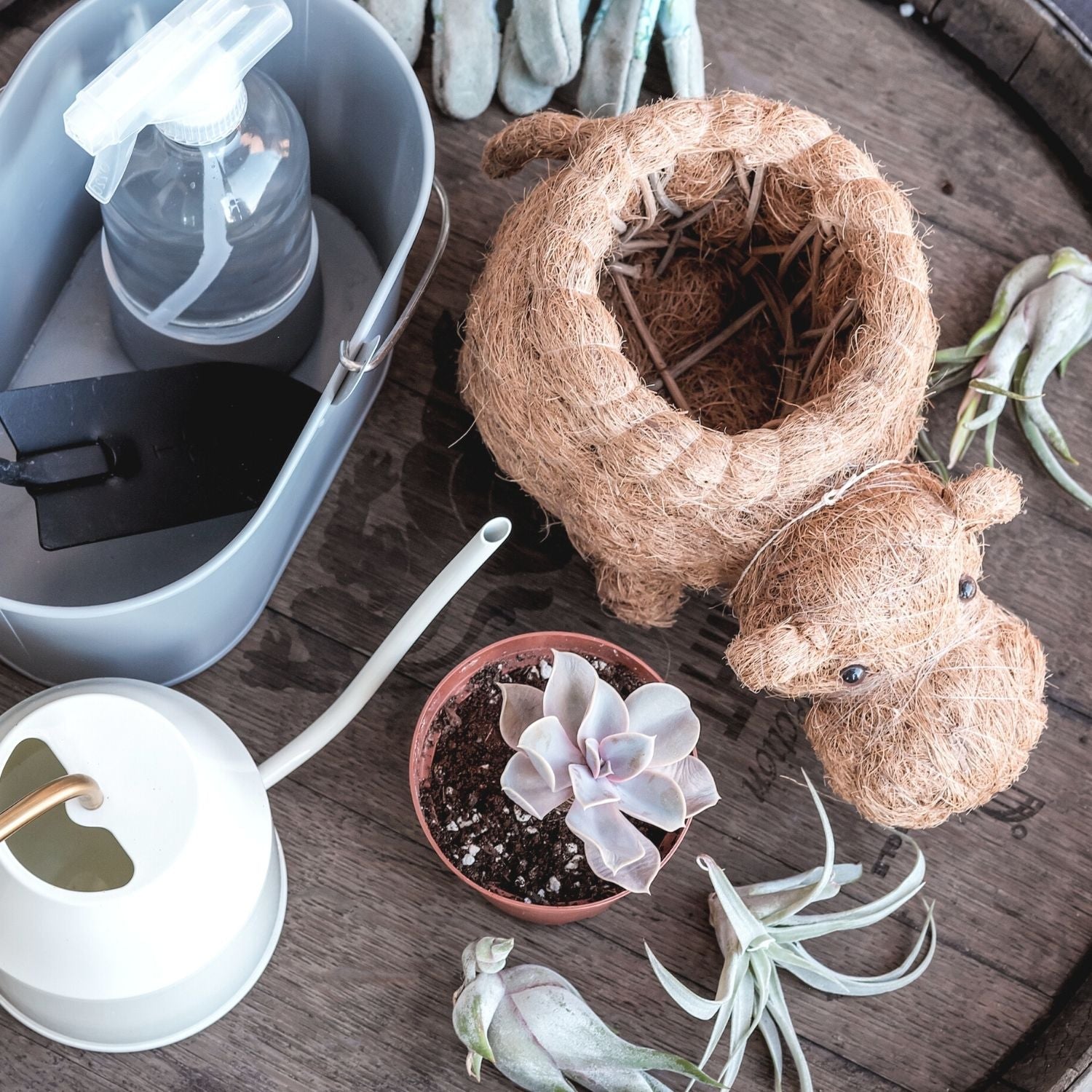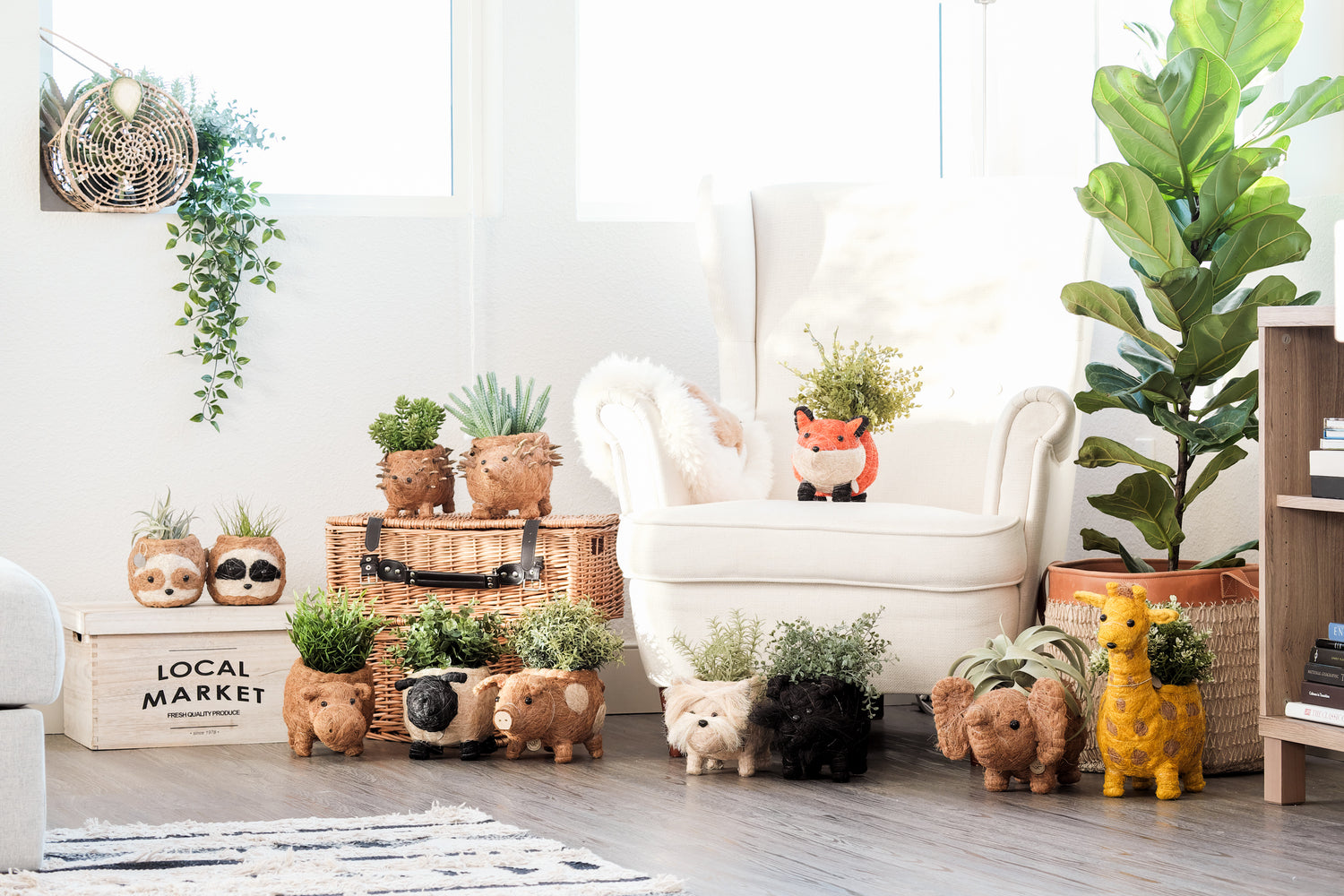Are you new to gardening?
If you are a new plant parent, then this article is for you. We have put together a simple guide to help you grow and care for plant babies.
Gardening 101: Beginner Basics
Gardening is a trend that has flourished since the coronavirus pandemic began. There are 18.3 million new gardeners in the U.S., according to the National Gardening Survey 2021. 88% of these are keen on increasing or maintaining their level of gardening activity this year. So if you’re joining the green bandwagon just now, know that you are not alone.
Like with any new venture, being a newbie plant parent can give you mixed emotions. Collecting succulents or adorable animal planters may be exciting. However, some doubt their ability to care for another living organism.
To make things easier for you, we at Likhâ put together a quick and easy read on how to be an effective plant parent. Here are five tips to make gardening a breeze:
1. Start low.
It’s best to go for low-maintenance plants when you’re still trying to figure out if you have a green thumb. Opting to buy plants that are easy to maintain will give you a higher chance of success. Go for the more tolerant plant varieties such as aloe vera, philodendrons, or snake plants.

There are plenty of options in the market, so be sure to do your research before you go plant-shopping. Basic knowledge of plants and plant care will help you to be more aware of their particular needs. You can look up resources on the Internet or download an app to get relevant information.
2. Choose the correct gardening location.
Location is vital when starting your plant collection. The typical move is to put them where they would look pretty. However, it is best to place them in areas where they get the best growing conditions.
Check the humidity, light, and temperature requirements of your plant. Exposure to direct sunlight, proximity to drafts, and excessive or insufficient heat are some factors to consider. Also, think about how your plant will fare in that space in the summer or winter months.
3. Secure the correct soil.
Different plants need different soil mixtures. You need to research which potting medium is best for your plant. Indoor container gardening may need a different soil mix compared to backyard cultivation. For example, succulents prefer coarse, well-drained soil. Orchids, on the other hand, love coco coir and husk chips or sphagnum moss.
Most indoor potting mixes call for a soilless potting mix composed of peat moss, perlite, and vermiculite. Gardeners usually prefer this potting medium for its sterile and moisture-absorbing qualities.
4. Pick suitable pots and planters.
Aside from picking the right location, you should also be mindful of which pots and planters to use.
Getting something too small may hinder the plant’s growth as the roots will not have room to spread out. It may also mean that the pot may not hold enough water to support the plant. There’s also the tendency for the pot to tip over if the plant is too big for its container.
If your plant is an aggressive grower or has big roots, it is ideal to place it in a pot two to four inches larger in diameter. If roots start poking out of the drainage holes, then it’s time to find a bigger pot.
Going to the extremes and getting a giant pot may not also bode well for your plant. A pot that is too big may hold too much water or take too long to dry out. This may cause mold growth, root rot, and other root diseases.
When choosing pots, make sure that there are drainage holes so your plant’s roots can get enough air and water. You can also use coco coir containers such as Likhâ’s handcrafted animal planters for excellent aeration and water retention. It’s best used with a pot or a liner, especially when used indoors.
5. Watch your water.
One of the common gardening dilemmas that new plant parents have is how to water their plants correctly. Some beginner gardeners tend to over water their plants. Others completely forget to give their plants a drink.
A simple watering trick is to stick your finger about an inch or two into the soil. If the soil feels too dry, then it’s time for a little shower. Use a watering can with a long spout so water goes straight into the soil and avoid the leaves. Water until the soil is moist and not dripping wet.
Again, it’s best to research the specific water requirements of your plant for optimum plant health.
Flourishing Foliage
Gardening has its benefits. Some tend to their gardens as a form of physical activity. Others do it for their emotional and mental well-being. Whatever your reason for getting into gardening, we hope that the simple tips we shared above can help you create a green haven in your home.




